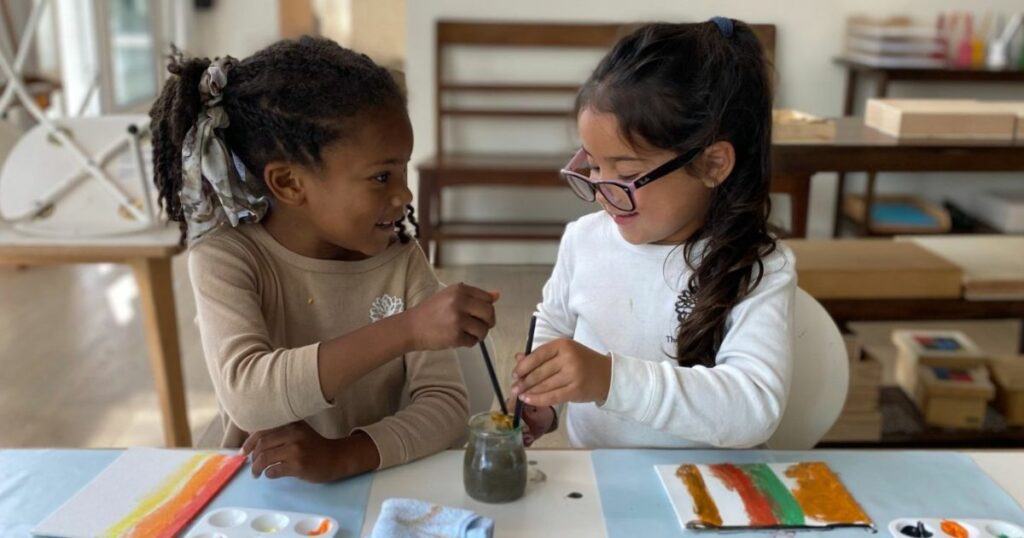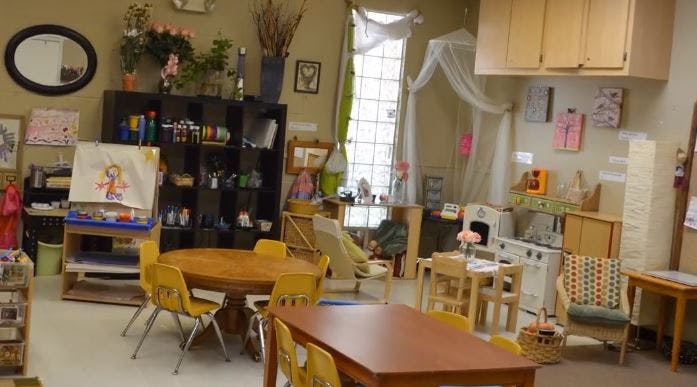Your baby will make a lot of noises from the moment they are born. Cooing, gurgling, and, of course, sobbing are all examples of this. Then, usually before the end of their first year, your kid will say their first word.
This is a major milestone and an exciting time for you, whether your first word is “mama,” “dada,” or something different. However, when your child grows older, you may be curious about how their language skills compare to those other children their age.
Early childhood development requires the development of communication and language abilities. Surprisingly; children automatically pick up the language. Nevertheless, how we engage with them has a big impact on how their language skills develop.
Continue reading to find tips on how to encourage language development in toddlers.
How can you teach your toddler to talk?
#1 Read together
One of the most effective ways to encourage language development is to read to your child as much as possible every day. According to a 2016 study; having picture books read to them exposes children to a greater vocabulary than hearing adult speech.

According to a 2019 study, reading just one book each day exposes children to 1.4 million more words than children who are not read to by kindergarten!
#2 Make use of sign language
To teach your kid a few fundamental signals- you don’t need to be fluent in sign language.
Many parents have taught their children to sign words such as “more,” “milk,” and “all done.” Young children frequently have an easier time learning a second language than adults. They may be able to communicate and express themselves at a much younger age as a result of this.
You’ll sign the word “more” while simultaneously uttering it. Repeat this process until your baby understands the sign and identifies the word with it.
Giving your toddler the capacity to communicate with sign language may give them more confidence in their communication. By helping kids in communicating with less frustration- they may be able to create a better environment in which to learn new languages.
#3 When at all possible, use language
You don’t have to sit in silence all day because your infant can’t speak. The more you talk and express yourself, the easier it will be for your child to pick up a language at a young age.
Narrate or explain what you’re doing when changing your toddler’s diaper. Inform them of your day or discuss anything else that occurs to mind. If at all feasible, use basic language and brief sentences.
You can also encourage your toddler to talk by reading to them throughout the day. While you’re cooking together, you can read the recipe. Alternatively, if you’re out on a stroll in your area, read street signs as you approach them.
You can even sing to your child, perhaps a lullaby that they enjoy. Sing your favorite song if they don’t have one.
It is one of the best tips for language development in toddlers.
#4 Keep the baby conversation to a minimum.
While it’s endearing when children mispronounce phrases or use baby language, leave it to them. Don’t feel compelled to correct them; simply respond with the correct usage. If your child asks you to “bunnet” their shirt, for example, you can respond, “Yes, I’ll button your shirt.”
#5 Name items
Instead of asking for something, some toddlers will point at it. You can help your child know the names of various items by acting as an interpreter.
If your child points to a cup of juice, for example, respond with, “Juice.” “Would you like some juice?” The idea is to get your child to speak the word “juice” on his or her own. So, instead of just pointing, encourage them to use the actual phrase the next time they want something to drink.

#6 Expand on their responses
Expanding on your child’s responses is another approach to increase their vocabulary. For example, if your kid points to a dog and says “dog,” you could respond, “Yes, that’s a huge, brown dog.”
This strategy can also be used when your child drops words in a phrase. “The dog is big,” your child might say. You might elaborate on this by saying, “The dog is a huge dog.”
#7 Give your child options
Giving your child options can also help to increase communication. Let’s imagine you have two juices and want your toddler to select between them. “Do you want an orange or an apple?” you can ask your child.
Encourage your kid to use their words instead of pointing or gesturing.
In a nutshell:
Keep in mind that toddlers learn at their own pace. After all, your youngster is actively learning new terms and applying them in everyday situations. Talking, reading, singing, and other activities can all be beneficial to their early growth. Use different language development activities to develop communication and language abilities.






